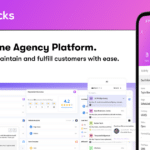
Are you aware that there are approximately 12 million – 24 million e-commerce sites worldwide? As more and more people are making purchases online, the popularity of e-commerce websites has grown dramatically.
It means that the competition is tough. To ensure that your e-commerce site is always up, functional, and secure, sophisticated e-commerce testing that corresponds to the emerging market changes is required.
In this article, we will be covering in detail e-commerce testing, its various benefits, and an e-commerce testing checklist.
What is e-commerce testing?
E-commerce testing can be understood as the process of evaluating and assessing e-commerce websites and applications for their correct operational functionality sans performance or security issues.
E-commerce website testing considers and targets different designs, specs, functionalities, traits, pages, and features of the site, which are deemed to be vulnerable to risks and issues related to site performance. This test can avert errors and add value to your product by ensuring conformity to customer requirements.
The objective of E-commerce website testing is to ensure software reliability and quality, system assurance, and optimal performance and capacity use.
Earlier, it was believed that e-commerce testing is all about improving security features. However, effective e-commerce testing is more about working on each of the website’s components to make them functionally robust and secure.
By conducting an efficient security test of e-commerce apps, you will be able to spot and resolve numerous issues in advance, offer your services smoothly, reduce financial risks while complying with international standards to decrease cyber threats.
Benefits of e-commerce testing
Here are the main benefits of e-commerce testing:
Improve your online shop performance
Even when your e-commerce store looks fine, an effective e-commerce test can detect bugs. An e-commerce business usually uses different software and mobile apps and unified, integrated systems. Running a trial and test automation for your site is crucial when you have implemented custom e-commerce solutions.
Test automation will allow faster marketing, and running a robust test can make the marketing process more effective. You can spot the required changes and take appropriate actions while developing a great risk management plan and effective apps.
Ensure website availability
The website’s availability is vital for a business. It is estimated that 98% uptime can lead to a loss of nearly $200K in potential revenue, even though 98% uptime sounds like site availability is high. It is also said that 9% of visitors that run into a down site will not come back to the site again.
A high-quality software testing can prevent website downtime risk, particularly for high loads at peak times, while preventing lost revenue, unhappy customers, and spoilt brand reputation.Also, to help drive a more accessible web, you can take a free ADA & WCAG compliant test. Since the recent DOJ affirmation, all business-related websites are now viewed as places of public accommodations, and they must be made accessible for people with disabilities. Thus, learning the compliance level of your site is crucial. This test will give you an instant report of all deficiencies.
Ensure robust search functionality and fast loading speed
Most of the customers will browse through the products on offer prior to buying them. Statistics suggest that 43% of customers go directly to the search bar while visiting an e-commerce site.
If your site’s loading speed is slow and it has weak search functionality, it will give your customers a bad experience, resulting in low conversion. As per stats, 40% of people abandon a site if the loading speed is more than 3 seconds. Running an e-commerce test will ensure robust search functionality and fast loading speed while also increasing customer retention rate.
Prevent poor shopping cart functionality
When there is an issue with your shopping cart functionality, customers won’t be able to place an order though they have found the goods they are looking for. For instance, customers will not be able to apply a discount coupon if it is not working. Prevent this by taking an e-commerce test.
Prevent misleading analytics
To gain insights about who is visiting your site, rate of sales conversion, revenue by traffic source, average order value, the number of returning customers, and more, you need website analytics. If your analytics are misleading, you won’t be able to take the advantage of reliable data for evaluating your overall business strategy. Effective e-commerce testing can prevent misleading analytics.
Ensure security
When you test, verify and validate the products or apps, it will prevent them from intruders and cyber hackers. E-commerce testing also ensures that all your website pages are tested thoroughly for any issues, and transactions are validated and carried out securely.
E-commerce testing checklist
The main reasons for e-commerce testing are to check the app’s functionality and usability, how user-friendly it is, and to make your e-commerce website or app bug-free.
To enable you to conduct seamless e-commerce testing, here are the important features you should test in an e-commerce website or application:
Hero Image in your Homepage
The Hero image is that large banner image at the top of your website. It serves as a visitor’s first glimpse of your company and what you offer.
The clickable image occupies the majority of the page.
When testing your Hero image, consider these things:
- Is the image going to auto-scroll? If yes, at what interval will it be refreshed?
- When web visitors hover over the image, will it scroll to the next one?
- Can it be hovered or clicked on? If yes, does it navigate you to the right page and deal?
- Does the Hero image load along with the remaining page, or does it last?
- Can you view the remaining content?
- Is the performance the same in different browsers and screen resolutions?
Product Description/Details Page
Once a web visitor finds the product they are searching for, they will be directed to the product info page right away.
Once your target audiences land on this page, they’ll decide whether to proceed further to the checkout page or not. Thus, it’s essential to ensure that the product details page is operating smoothly and is engaging and attractive enough to lure in the visitor and make him finish his buying process.
For starters, the product images should be of high quality and display your product in the best light possible. Add videos to give a better idea about the look and feel of your products, if possible.
After that, keep an eye on elements like the price of the product, product description, product specs, shipping info, various color or variations choices, etc.
Breadcrumb navigation is another important factor.
Here’s an example for “categories,” as highlighted in red color below to ensure each element is functional.
Don’t forget to include reviews and testimonials to further push your visitors towards making the final sale. When they see reviews from past and existing customers, who have found your products helpful, they’ll also feel compelled to rue the benefits.
Lastly, make sure that you include essential details like check-out options, delivery options, in-stock/Out of stock status, and more.
Shopping Cart
Your shopping cart is the second last stage of the entire buying journey. In simple terms, it’s the stage right after which the buyer commits to the purchase.
When testing the shopping cart, it’s essential to test whether processes like adding products to the cart and carrying on with shopping are running smoothly. Moreover, every time a buyer adds the same item to the cart, the item count should be increased in the shopping cart, and the items and their totals must also be shown in the cart.
Your e-commerce site should also allow buyers to add or delete products even after placing products once in the cart. And when buyers add more items to the cart, it should be reflected in the total.
Now, the chances are that the visitor will finally head to the checkout/payment page from here. To make things simpler for your audiences, make sure to display shipping costs with diverse shipping options, along with taxes according to their specific location.
Here’s a great example:
Other than this, the visitors should be able to take out items from the cart even right before the checkout and close the site without checking out and return later. The website should nevertheless maintain the items in the cart.
Finally, check whether the “Proceed to checkout” process is working fine and if the users can “Apply Coupons” without any hassle.
Make Sure Search Algorithms Function Smoothly
Search algorithms are crucial for any e-commerce business’s success. It is because you can’t always get what the users want to see in front of their eyes.
While testing for search, consider these things:
- Search based upon the name of the product, brand, or category.
- To ensure search results are relevant.
- To see different options are available based upon Brand, Price, and Reviews/ratings, and so on.
- The number of results to be displayed per page.
- For multi-page results, test whether options are available to navigate to them.
- Since search happens in varied places, take the search drilling down into many levels when authenticating this functionality.
Final Checkout Page.
Now, this is where your audiences will finally make the purchase. Your final checkout or payment page is one of the most crucial aspects of an e-commerce site that needs to be tested. The users might abandon their carts if they get stuck on this step, and all your efforts will go to waste.
To start with, ensure that you provide different payment options so that your users always have the facility to complete the payment. If you are permitting “Guest check out,” ensure that the purchase is getting completed. And don’t forget to offer a choice to register at the end nonetheless.
Here’s an excellent example of a step-by-step payment process:
Other than this, make sure to test this list:
- Returning customers are able to log in smoothly to check out.
- User signup.
- If you are storing customer financial info such as credit card info, conduct a security test to ensure it is secure. You must comply with PCI standards.
- When users are signed up for a long time, check whether the sessions are timed out or not.
- Test Emails/Text confirmation. They should generate an order number.
Related or Recommended Products
Related or recommended products usually help you provide extra variety to your audience, which may even end up in either a cross-sale or upsell.
When your users see something else they like while browning, they may change their mind and purchase that other product you “recommended” to them.
It also comes in handy to encourage returning customers to make the final purchase.
When returning, customers will see the recommended products on the home page or in their shopping cart, and they just might decide to purchase something.
Here’s an example:
Thus, make sure that your code or algorithm that displays “Recommended Items” is working fine. It’s also essential to make sure that the right product gets recommended to the right person – and that too at the right time.
Featured Products
Featured products are another important aspect that you must test. The “Featured Products” section usually keeps altering almost daily to display particular products for a specific time.
Like the recommended products section, this section also falls under dynamic features. Thus, you can test these portions by testing the algorithm based upon which these parts are populated.
You can check your Data mining/BI systems and check the questions that populate these sections from the backend.
After-Order Tests
While conducting an after-order test, you can test elements like Change the Order date or address, Cancel the Order, Track the Order, and Return.
You also need to check Login, FAQs, Contact Us page, Customer Service page, and so on.
Compatibility with Web Browsers
It is crucial to test the app’s compatibility with different types of web browsers, including Google Chrome, Internet Explorer, Firefox, Opera, Safari, and so on. You should ensure your clients are able to use your e-commerce site without facing any technical bugs.
App Workflow
You should be testing the complete workflow of your web or mobile app as you want to offer a stellar e-commerce experience to customers. It will include testing the login, signup, search functionality, sorting feature, shopping cart add and remove functionality, check-out process, payment gateway, and payment processing.
Consider using Beeketing, an all-in-one marketing solution. It easily integrates with all major e-commerce platforms, including Shopify, WooCommerce, BigCommerce, and Magento, and it comes with a range of free and paid plans.
Even the free version of Beeketing will help you to track and understand customer behavior, improve online sales and chat with customers directly on Facebook Messenger.
Mobile Responsiveness
The number of people using mobile devices keeps increasing daily. It is estimated that 62.24% of people use a mobile phone in 2021 and that the share of mobile commerce in all e-commerce is predicted to rise to 72.9% by 2021.
It is thus crucial to test mobile responsiveness and take a mobile-first approach in your e-commerce apps. Take special care to test the responsive design of the app in mobile devices of varying screen sizes.
Social Media Integration
Social media is a vital factor that determines the success of your e-commerce app or site. Thus, it has to be tested to ensure that social media integration is totally aligned with site architecture and workflow. You can also run a test to improve social media workflow and functionality.
SEO-Related Features
Apart from testing the overall performance of your e-commerce site or app, you also need to test on SEO-related features so as to rank higher in search engines. Test whether the title tags, URL structure, meta descriptions, and so on are implemented accurately and meet the requirements
Also, don’t neglect to test features in e-commerce apps, including site content, the webpage format, website accessibility, cookies, social buttons, adding and deleting content, creating changes to shipping settings, removing and adding links, and analytics.
Consider BigCommerce platform to set up your online store. It offers SEO-friendly features, including on-page SEO customizations such as SEO titles, meta tags, and image alt tags.
Security
An e-commerce testing without security testing to test for security and vulnerability concerns would be incomplete. As your e-commerce apps deal with valuable info, including customers’ financial data, it is a must to assess security issues. You can implement tests such as SQL Injection and ethical login hacks.
Wrapping-Up
An effective e-commerce testing will ensure satisfied and happy customers while increasing your profit.
Issues like website downtime, slow loading web speed, poor shopping cart functionality, insecure transactions, unresponsive web or app, and so on can all lead to unhappy customers. And unhappy customers will eventually make you lose marketing and sales opportunities.
Thus, it’s essential to conduct detailed e-commerce testing to reduce website errors and scale your business. Don’t forget to test even the most minor elements of your e-commerce site to avoid customer dissatisfaction and ensure a smooth buying journey.











